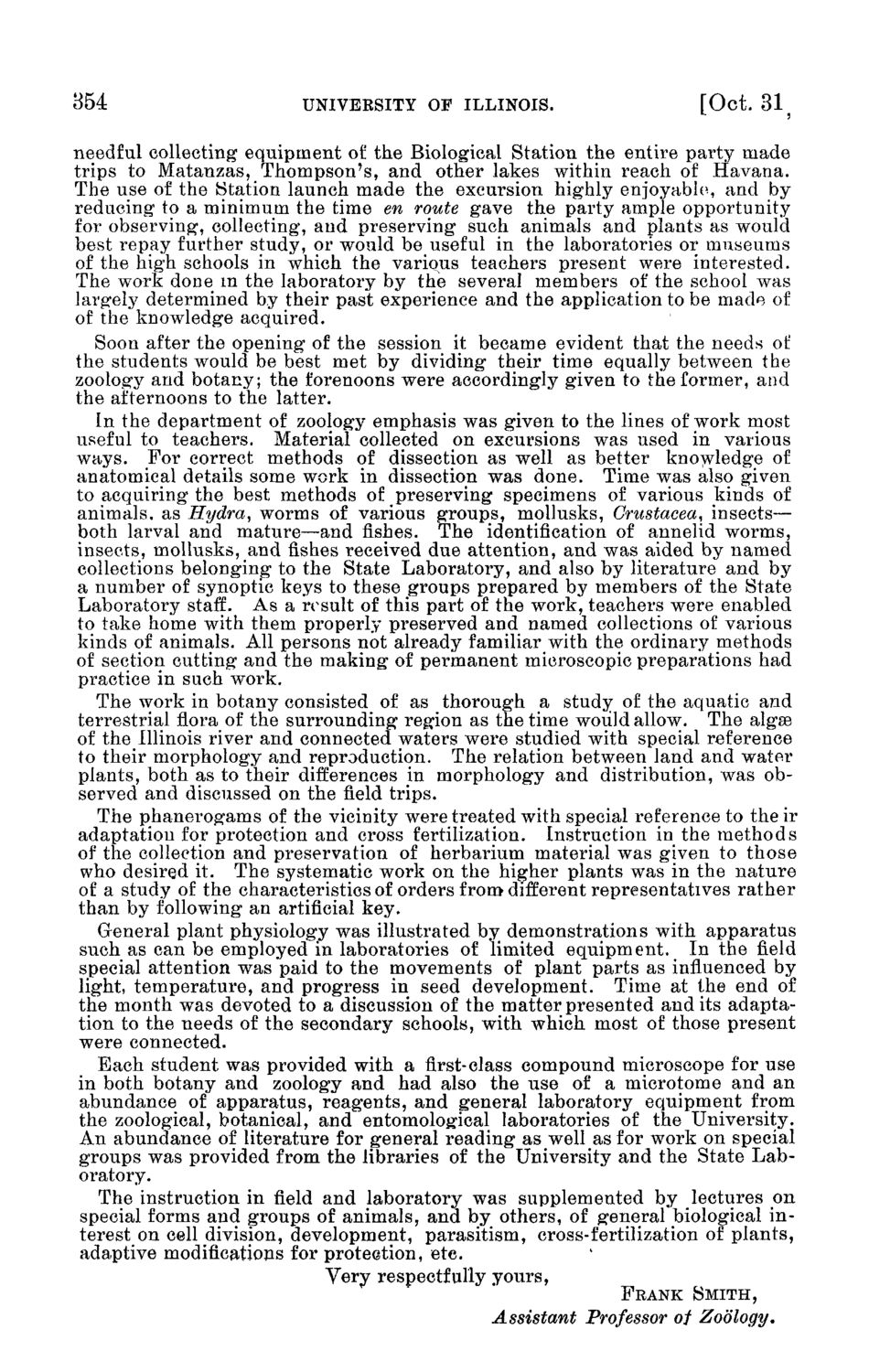| |
| |
Caption: Board of Trustees Minutes - 1898
This is a reduced-resolution page image for fast online browsing.

EXTRACTED TEXT FROM PAGE:
354 UNIVERSITY OF ILLINOIS. [Oct. 31 needful collecting equipment of the Biological Station the entire party made trips to Matanzas, Thompson's, and other lakes within reach of Havana. The use of the Station launch made the excursion highly enjoyable, and by reducing to a minimum the time en route gave the party ample opportunity for observing, collecting, and preserving such animals and plants as would best repay further study, or would be useful in the laboratories or museums of the high schools in which the various teachers present were interested. The work done in the laboratory by the several members of the school was largely determined by their past experience and the application to be made of of the knowledge acquired. Soon after the opening of the session it became evident that the needs of the students would be best met by dividing their time equally between the zoology and botany; the forenoons were accordingly given to the former, and the afternoons to the latter. In the department of zoology emphasis was given to the lines of work most useful to teachers. Material collected on excursions was used in various ways. For correct methods of dissection as well as better knowledge of anatomical details some work in dissection was done. Time was also given to acquiring the best methods of preserving specimens of various kinds of animals, as Hydra, worms of various groups, mollusks, Crustacea, insects— both larval and mature—and fishes. The identification of annelid worms, insects, mollusks, and fishes received due attention, and was aided by named collections belonging to the State Laboratory, and also by literature and by a number of synoptic keys to these groups prepared by members of the State Laboratory staff. As a result of this part of the work, teachers were enabled to take home with them properly preserved and named collections of various kinds of animals. All persons not already familiar with the ordinary methods of section cutting and the making of permanent microscopic preparations had practice in such work. The work in botany consisted of as thorough a study of the aquatic and terrestrial flora of the surrounding region as the time would allow. The algae of the Illinois river and connected waters were studied with special reference to their morphology and reproduction. The relation between land and water plants, both as to their differences in morphology and distribution, was observed and discussed on the field trips. The phanerogams of the vicinity were treated with special reference to their adaptation for protection and cross fertilization. Instruction in the methods of the collection and preservation of herbarium material was given to those who desired it. The systematic work on the higher plants was in the nature of a study of the characteristics of orders from different representatives rather than by following an artificial key. General plant physiology was illustrated by demonstrations with apparatus such as can be employed in laboratories of limited equipment. In the field special attention was paid to the movements of plant parts as influenced by light, temperature, and progress in seed development. Time at the end of the month was devoted to a discussion of the matter presented audits adaptation to the needs of the secondary schools, with which, most of those present were connected. Each student was provided with a first-class compound microscope for use in both botany and zoology and had also the use of a microtome and an abundance of apparatus, reagents, and general laboratory equipment from the zoological, botanical, and entomological laboratories of the University. An abundance of literature for general reading as well as for work on special groups was provided from the libraries of the University and the State Laboratory. The instruction in field and laboratory was supplemented by lectures on special forms and groups of animals, and by others, of general biological interest on cell division, development, parasitism, cross-fertilization of plants, adaptive modifications for protection, etc. Yery respectfully yours, FRANK SMITH, Assistant Professor of Zoology.
| |